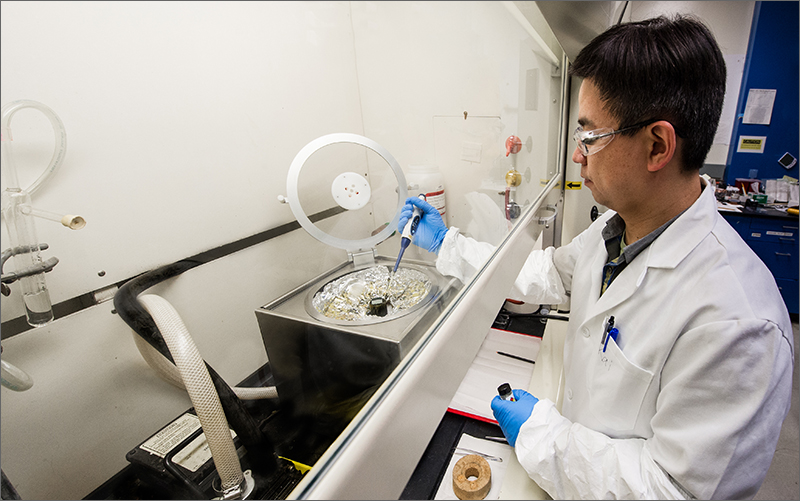Perovskite: A new solar material that has the same crystal structure as a mineral first found in the Ural Mountains in 1839 is shooting up the efficiency charts faster than almost anything researchers have seen before—and it is generating optimism that a less expensive way of using sunlight to generate electricity may be in our planet’s future.
The new cells are made from a relative of the perovskite mineral found in the Ural Mountains. Small but vital changes to the material allow it to absorb sunlight very efficiently.
The material is also easy to fabricate using liquids that could be printed on substrates like ink in a printing press, or made from simple evaporation. These properties suggest an easy, affordable route to solar cells.
By playing with the elemental composition, it is also possible to tune the perovskite material to access different parts of the sun’s spectrum. That flexibility can be crucial, because it means that the material can be changed by deliberately introducing impurities, and in such a way that it can be used in multijunction solar cells that have ultra-high efficiencies.
Multijunction solar cells are an NREL invention from 1991, but because of high material costs, standard multijunctions are used mostly in outer space applications such as satellites and the Mars rovers. Cheaper multijunction cells based on perovskites could radically change this.
In four years, perovskite’s conversion efficiency—the yield at which the photons that hit the material are turned into electrons that can be used to generate electricity—has grown from 3.8% in 2009 to just north of 16%, with unconfirmed reports of even higher efficiencies arriving regularly. That’s better than a four-fold increase.
By contrast, efficiencies of single-crystal solar cells grew by less than 50% during their first five years of development, and most other types of solar cells showed similar modest improvements during their first few years.
NREL materials scientists are encouraged by the possibility of further optimizing the materials. For example, replacing lead with tin in the cells could improve the efficiency of multijunction cells made from perovskite.
Besides switching to a more environmentally friendly material, the change from lead to tin would also allow the finished solar cell to better withstand high humidity.
Reference:
US Energy Department’s National Renewable Energy Laboratory (NREL)










Comments